Here's how you make one million cases per month, INWIN style
The first comment I made to my tour guide Nelly was about how fast everything moved. I've been on many factory tours in the past, but straight away I noticed the great pace of how the people and machines were working. Nelly quickly made a point of telling me that INWIN is able to produce up to one million cases per month. In fact, they've been so busy lately that her and other marketing and sales people are pulled away from their desk jobs to help out with things like packing at the factory 2 or 3 days a month.
We made it to Taoyuan--a little less than an hour away from Taipei, the capital of Taiwan--home to INWIN, a company that has been producing computer cases for only a little less time than I've been alive. If you don't like text or photos, just hit play on the video we created above. Otherwise, keep reading...
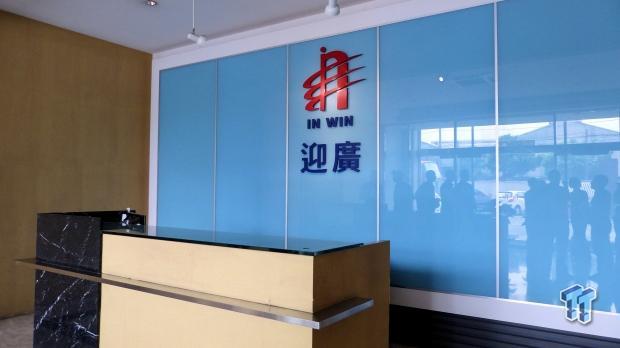
We started off the tour in the HQ where we were given an introduction to the company and an exclusive look at two new stylish and sexy cases that INWIN will launch at Computex Taipei 2014 this week, the D-Frame Mini and the S-Frame.
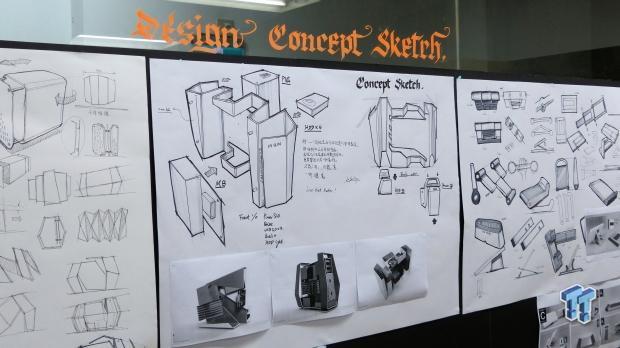
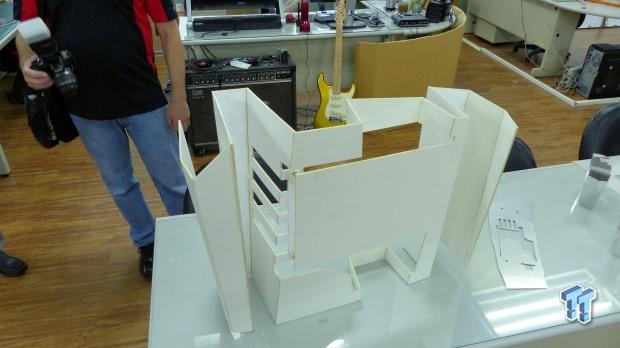
From there we were introduced to the design center. Here INWIN hires several people whose job is to continually think of funky, hip, and new designs for cases that may or may not see the light of day. Above, you can see the design concept sketch wall featuring the impressive new S-Frame as well as a paper mockup of it on the right.
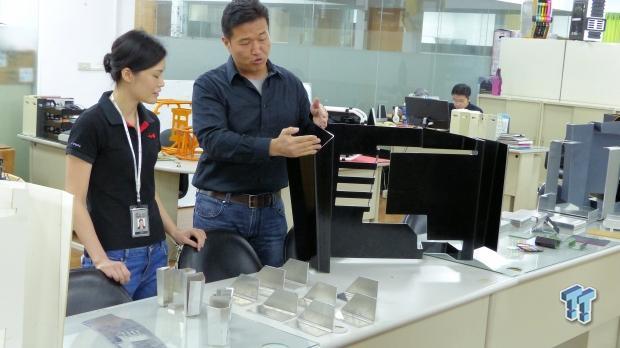
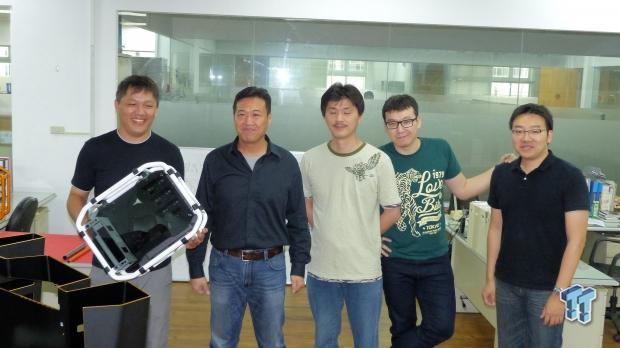
On the left, we see the S-Frame being introduced and some of the challenges it introduced with its unique curves and shapes. And on the right, we see the very proud INWIN design team.
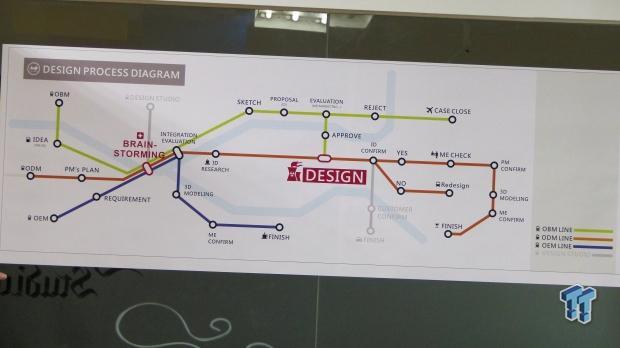
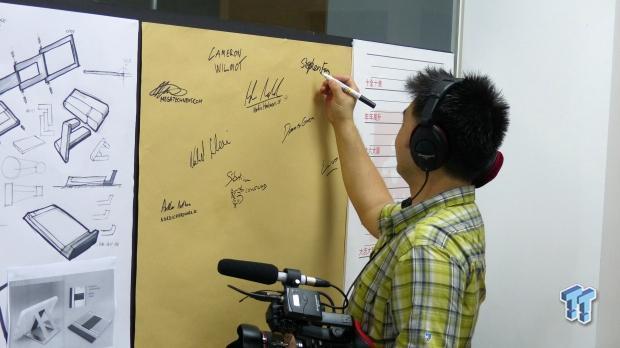
On the left we see INWIN's design process diagram, which is of course a flow chart of the design process from start to finish. Before we could leave the design room, the INWIN design staff were adamant that we sign the wall before we leave. Here we see Stephen Fung from Futurelooks.com leaving his mark. Yep, sorry, I wouldn't get hired by the INWIN design team--not an artistic bone in my body, as you can see.
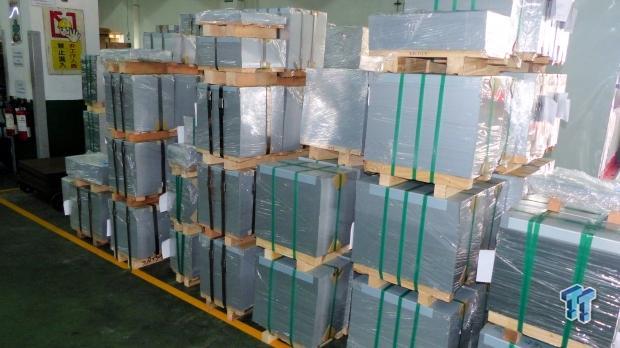
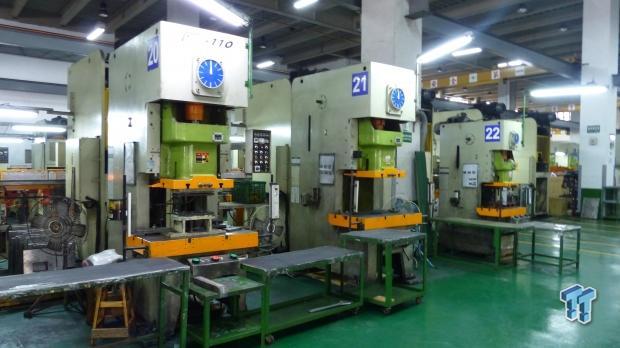
Here you can see we've moved into the actual factory. On the left you can see the raw metal material waiting to be turned into a case. On the right you can see one of the many pressing machines that INWIN owns.
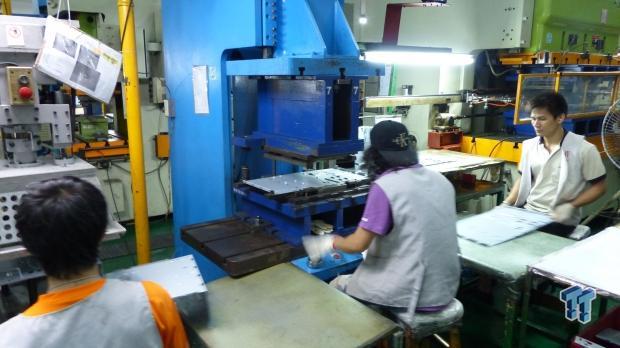
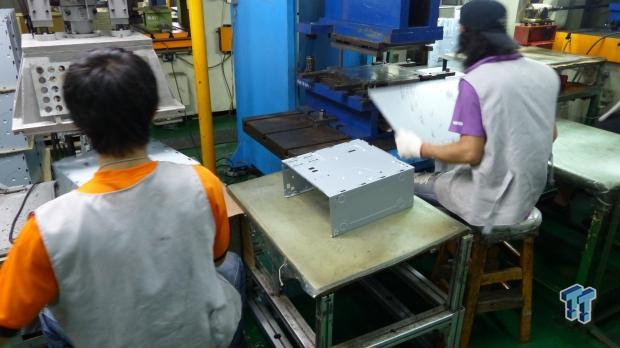
In the above pictures you see a piece of metal going along the line, and then almost like magic, it begins to shape into a case.
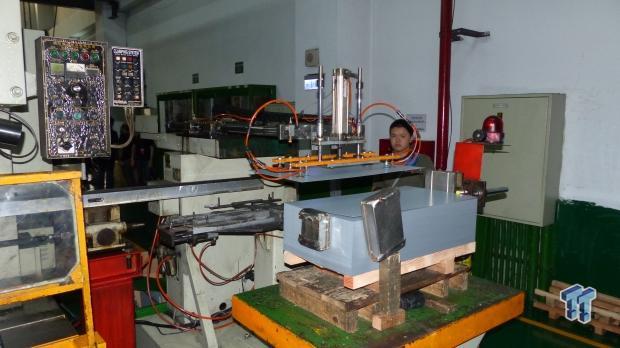
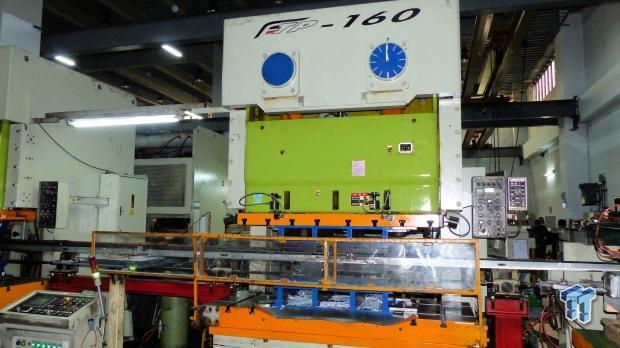
On the left, you can see how the machine picks up the raw material right before it hits the line. And on the right, you can see just one of the massive pressing machines in all its glory.
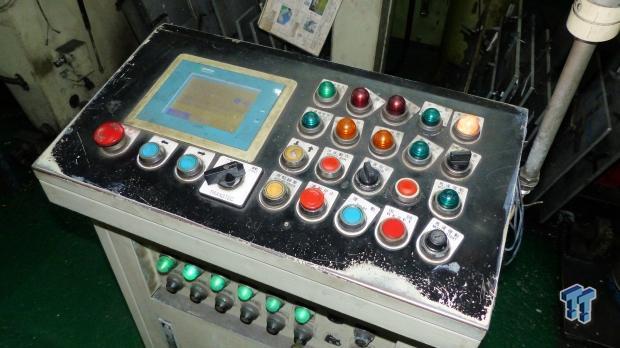
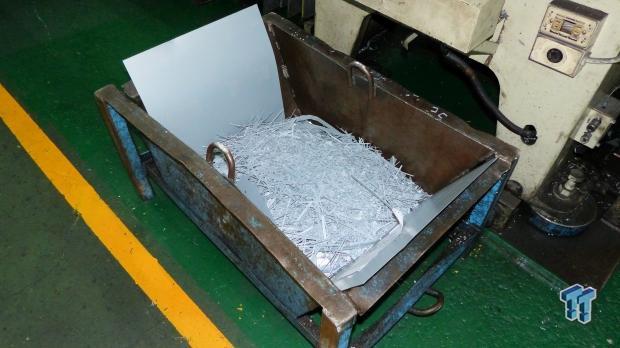
Do you know what all those buttons do? One thing that made me really happy was INWIN's efforts when it comes to recycling. I spoke in detail about this with my tour guide Nelly, and she told me that INWIN is very serious about recycling. All of the offcuts are sent to a recycling company, and some of it is even able to be used again after it has been melted down. Since after the melting down process the quality is reduced, this recycled raw material is often used on cheaper cases.
I was impressed to hear that INWIN recycles enough and gets enough return on that investment that it creates enough revenue to pay for all business trip expenses of the employees of the company. Doing good by the planet and profiting from it!
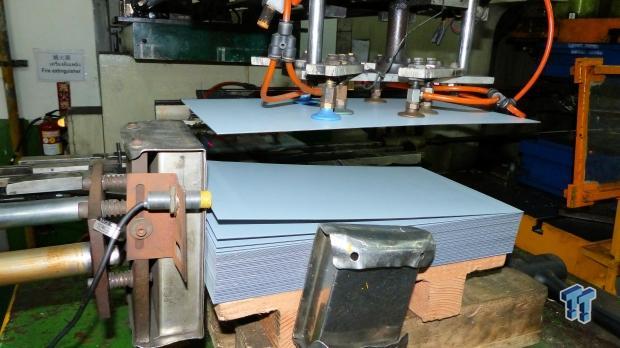
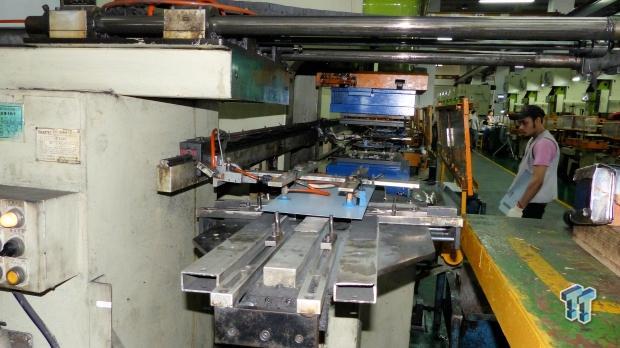
Again we get a close up of the machine picking up the raw material and then entering the line in the photo on the right.
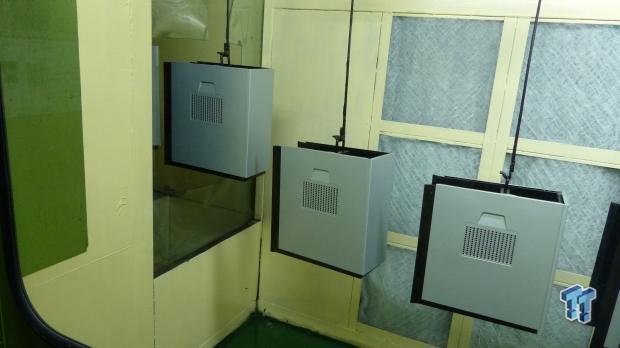
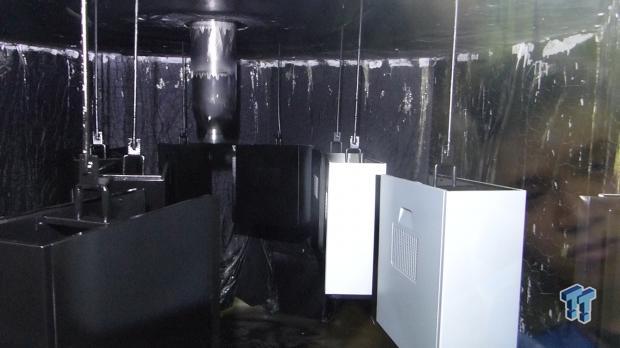
In the photo on the left, you can see that the case side panels have been hung, cleaned, and are ready to be painted. The photo on the right shows how the panels get painted.
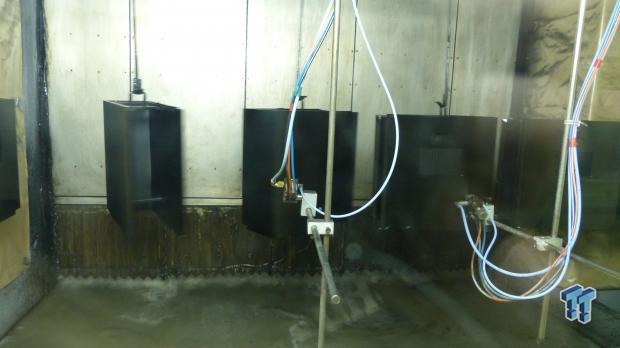
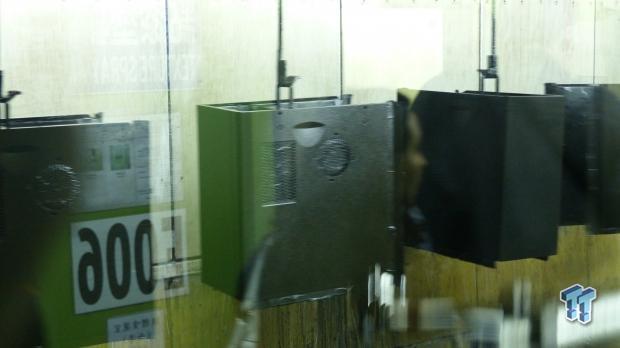
It's a little hard to take a good photo behind glass, but these pictures show the touch up painting area (left), and on the right you can see texture paint being applied.
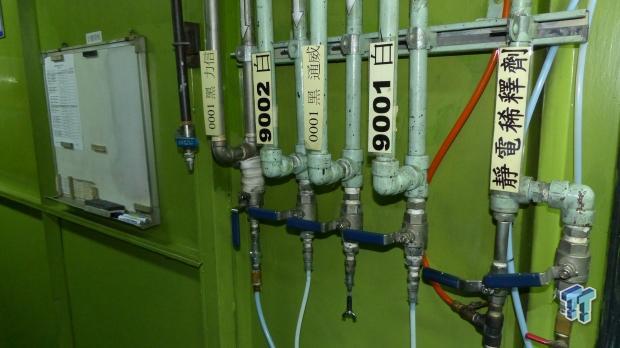
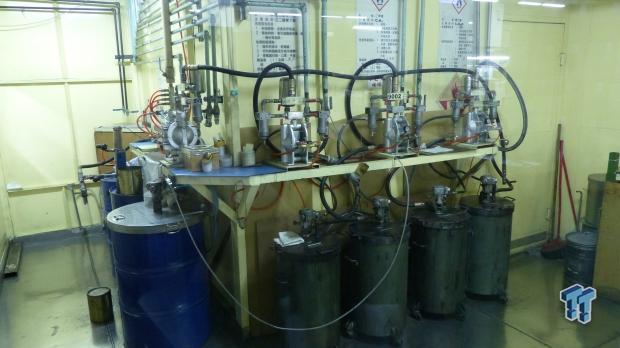
These photos above show how INWIN is able to adjust the color of paint that is being applied, and the photo on the right shows the massive tanks of paint in the supply room.
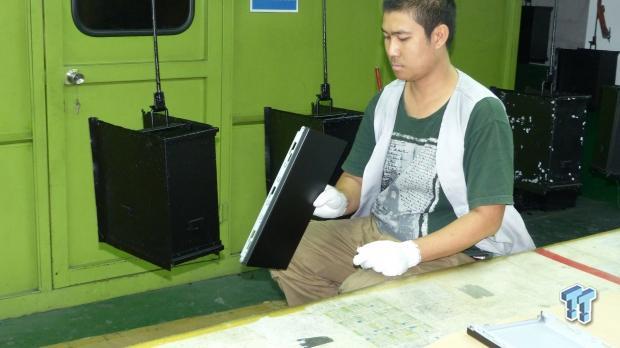
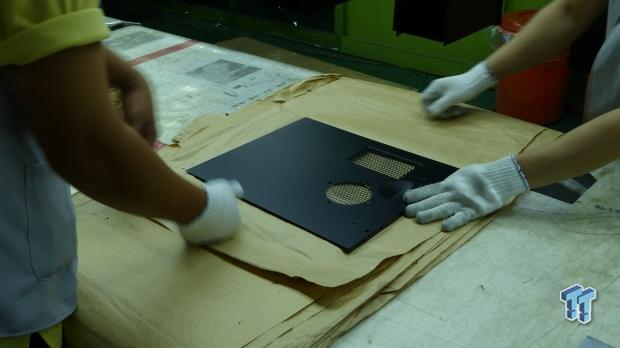
On the left we see an INWIN employee doing some quality control to make sure the paint job was completed without any flaws after it had passed through the oven drying line. Then the panel is packaged and sent off to another part of the factory for assembly.
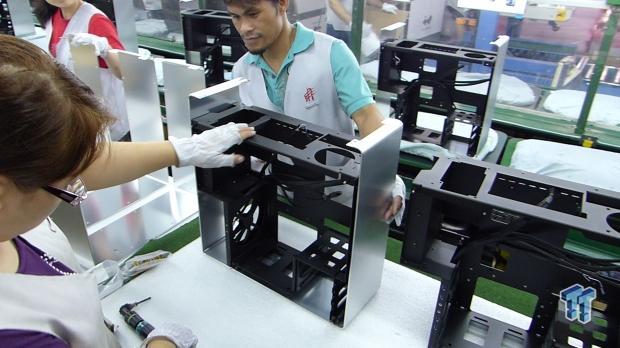
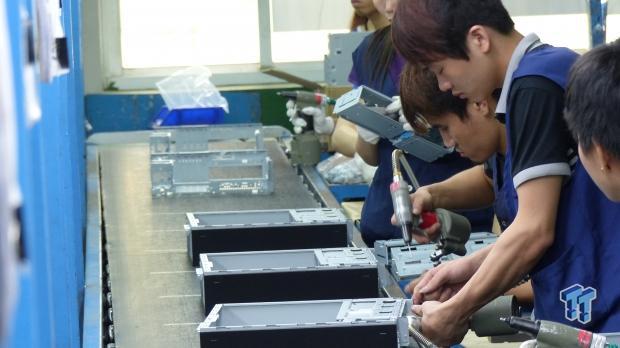
And speaking about assembly, here we see some INWIN employees hand assembling a couple of different cases. A lot of the factory is automated and operated by machines, but not everything can be completed by robots. From what I can see, humans will still have a role in the production of cases for many years to come.
Interestingly, I did ask about the use of 3D printing in case production, and INWIN commented that they are researching it, but it is not quite the time to get into that yet. They did say that it could soon be a viable method of creating mockups though.
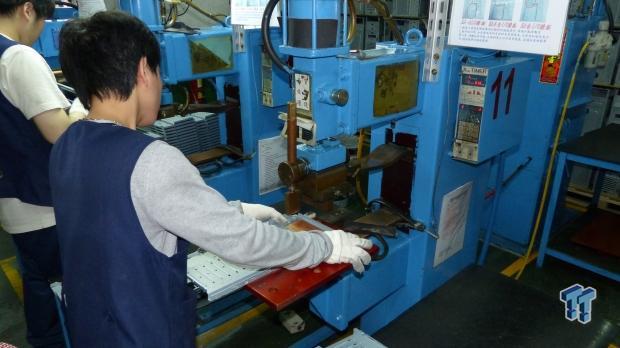
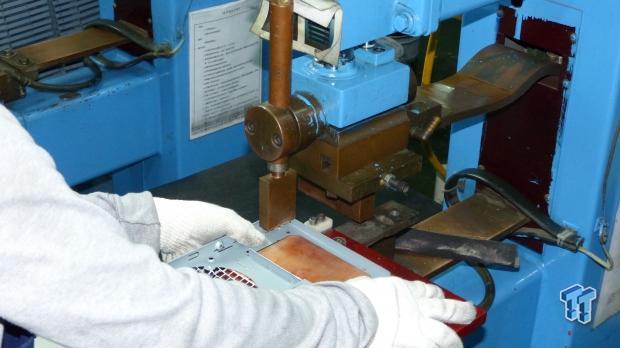
In the photos above, we get a close up look at one of INWIN's welding machines.
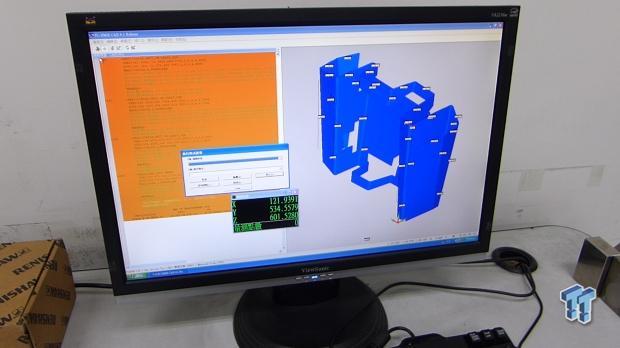
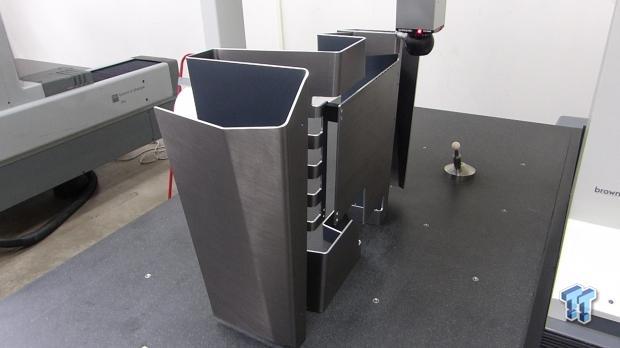
Here we see an impressive digital 3D measuring device that is checking to see if the dimensions and such of the S-Frame are correct. Once the design has been approved, INWIN can proceed with making more S-Frame cases since the 3D device has approved it. This machine tells INWIN that its molds, machines, and everything else along the line are calibrated correctly.
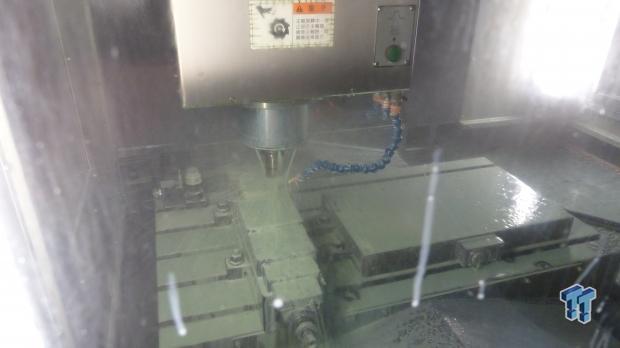
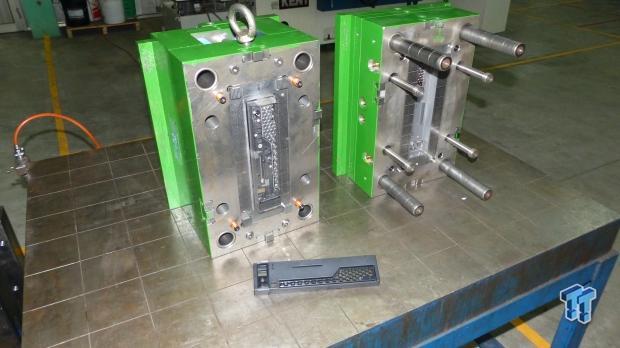
One thing I didn't expect at all to see on the tour was that INWIN is actually able to create its own molds for the massive pressing and punching machines.
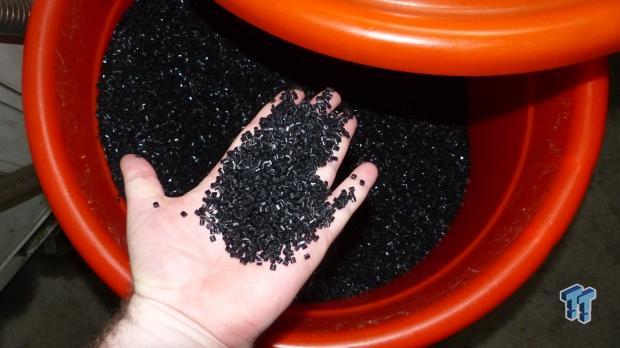
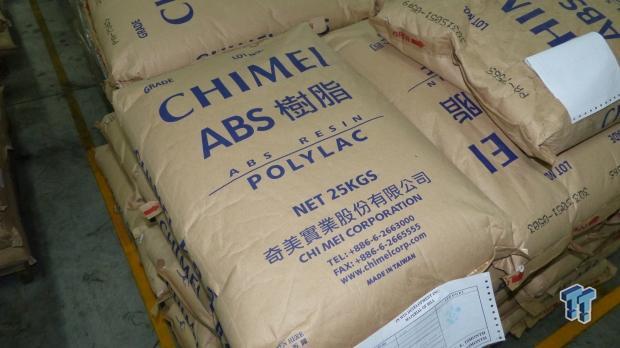
Here we see the raw plastic before it is turned into a part of the case. It was quite special to see it go from its raw form to an actual part of a case in really just a few minutes.
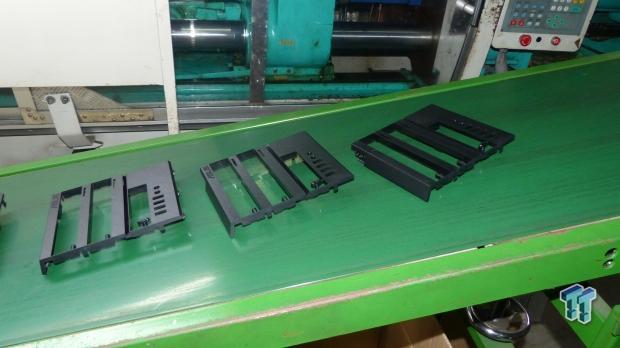
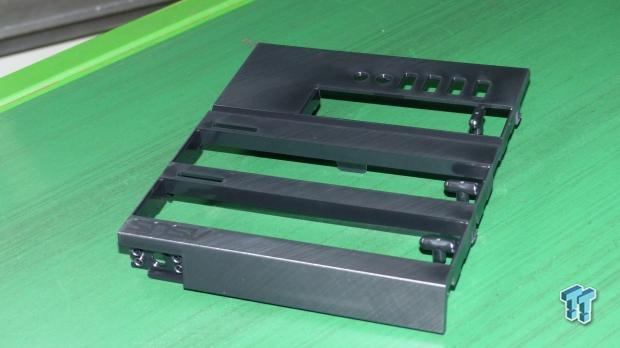
And this is what I was talking about. After the plastic pieces are sucked up into the machine (literally), a few minutes later you have a fully completed piece of the case. During this part of the tour, INWIN was creating a part of a case for an ASUS computer. I asked INWIN about its percentage of retail and OEM production. INWIN produces 70 percent of its own cases and 30 percent for other companies.
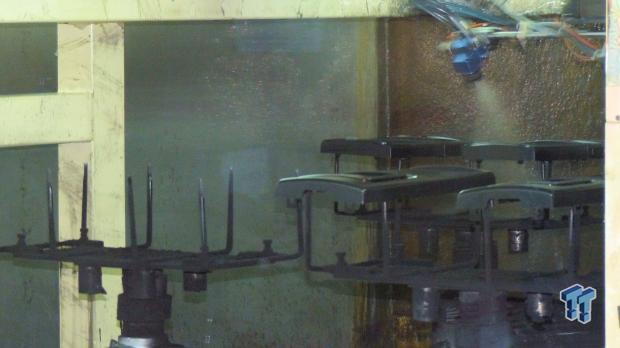
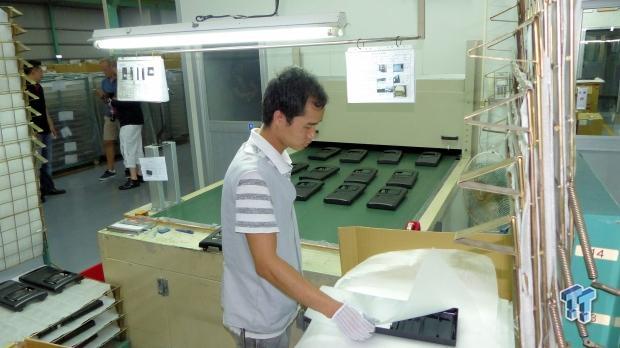
In the photo on the left, we can see a different method of applying paint to the case. And on the photo on the right, we see the panels coming out after being baked. After being checked, they are then packed up and sent to another part of the factory.
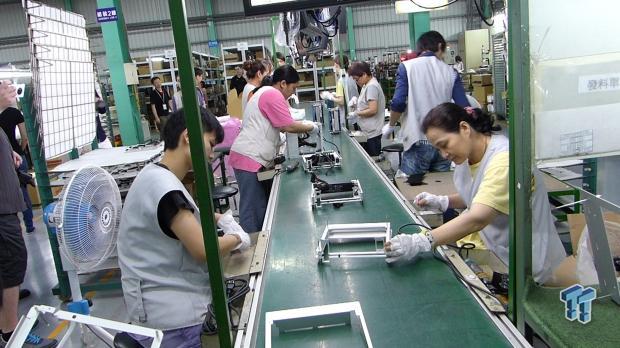
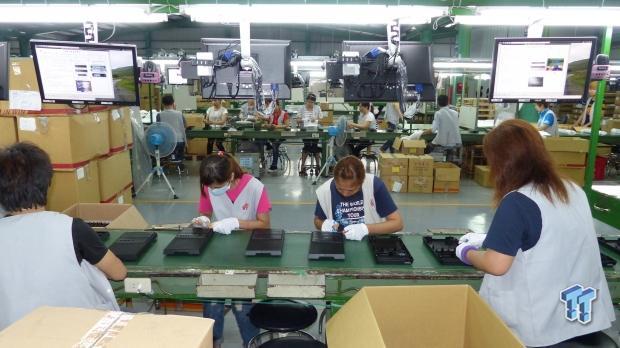
In the photo on the left, we see INWIN employees assembling some cases and on the right labeling being applied.
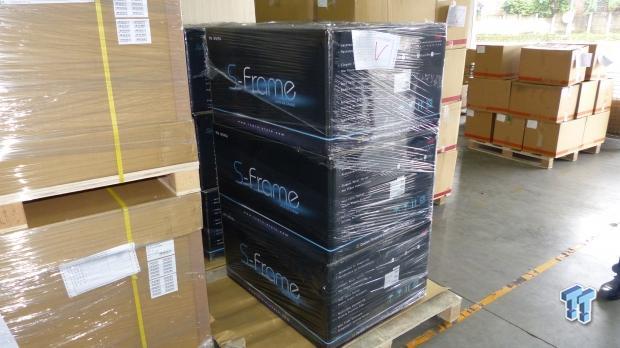
After all is said and done, the case is completed, packaged up, and ready to be shipped off to INWIN customers.
We hope you enjoyed this article. We were the first lot of media to do a factory tour at INWIN, and I'd like to thank Nelly and the rest of the team at INWIN for looking after us really well and creating an interesting experience for us.

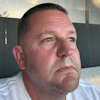
 United
States: Find other tech and computer products like this
over at
United
States: Find other tech and computer products like this
over at  United
Kingdom: Find other tech and computer products like this
over at
United
Kingdom: Find other tech and computer products like this
over at  Australia:
Find other tech and computer products like this over at
Australia:
Find other tech and computer products like this over at  Canada:
Find other tech and computer products like this over at
Canada:
Find other tech and computer products like this over at  Deutschland:
Finde andere Technik- und Computerprodukte wie dieses auf
Deutschland:
Finde andere Technik- und Computerprodukte wie dieses auf